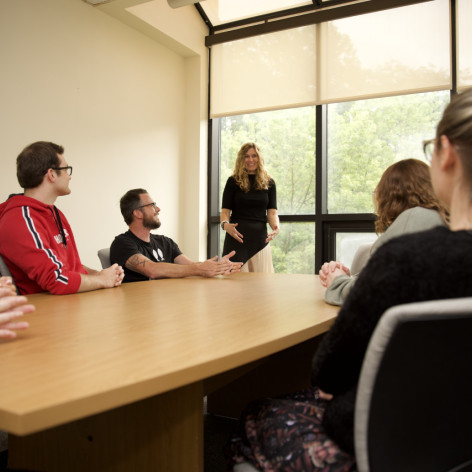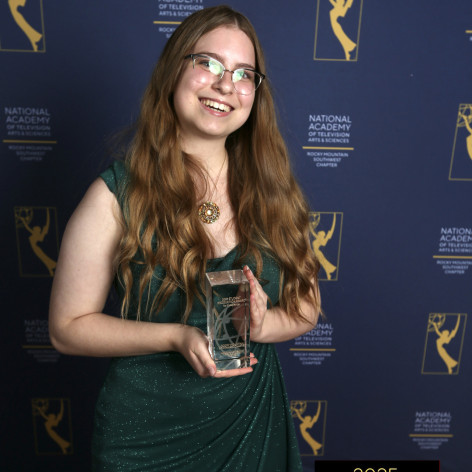Landmark transformed again for generations to come
 It all began on Aug. 18, 1896, when the cornerstone was laid for the university's first building. Throughout the next year, more bricks were added until Sept. 22, 1897, when the college opened for its first term.
It all began on Aug. 18, 1896, when the cornerstone was laid for the university's first building. Throughout the next year, more bricks were added until Sept. 22, 1897, when the college opened for its first term.
At the time, that one building housed everything - classrooms, the library, chapel, plays and even basketball games.
Over the years, the "Ad Building" - now known as Becker Hall - became iconic. It developed into the place to inscribe your name for future generations to read. It was the birthplace of Davis Hall Follies. And it produced such legends as the cow that made its way to the third floor one moonlit night.
Needless to say, that building has seen a lot of history, and now it's seeing a new future.
Throughout the summer and into the fall months, crews have worked to renovate Becker from the ground up.
New restrooms were constructed in the basement; a new tribute-to-the-past lobby was added; an elevator opened accessibility to all floors; and the digital media arts program found a new home.
With the explosive growth of the digital media arts program in the last few years, concern arose about the availability of space on campus. Ideally, the plan would have been to construct a new building to house all of the arts programs, but economic conditions made that plan unrealistic for the time being. Instead, a $1.5 million renovation and construction plan was proposed for the digital and visual arts through Together: The Campaign for Huntington University.
Since the art department was previously using Davis Hall, a new 2-D building was constructed next to the existing Art Annex building to create the Studio Art Center, which encompasses both structures.
The Studio Art Center opened in February to delighted students and faculty, alike.
"Finally, we are centrally locating our students which will create a greater sense of community within the art department and foster a more creative environment," said Ken Hopper, associate professor of art. The new 3,000-square-foot building features overhead directional lighting and a large studio space for drawing, figure drawing and painting. There is also a photography light studio.
With those plans settled, the focus returned to Becker Hall.
Crews spent the summer tearing up floors, hanging drywall and even bringing a new sense of "old" to the building.
"(We wanted to) respect the ethos of the building," said Tom Ayers, vice president for business and finance. Fetters Construction even donated wood trim and ceramic tile for the lobby to protect the vintage look. "We're very purposely trying not to make this look like a new-era construction."
Different considerations were taken for Davis Hall, however. The theater stage was removed; walls were added to create editing rooms, an equipment cage and a film studio with 22-foot-tall ceilings; faculty offices were constructed; and a 25-seat stadium theater was added as a viewing classroom.
"It's a wonderful short-term solution to a long-term plan," said Dr. Lance Clark ('89), associate professor of digital media arts, film and communications. "I think we can now afford the opportunity to look at growth."
For the most part, the space will remain like a loft, offering versatility for future uses. Clark said that the department has also talked to outside production companies about using the space for films. He said this will afford students the opportunity to gain practical experience alongside professionals in the field.
"Back in the mid-80s, I actually took television and video production courses in this space," Clark said. "Now it's really special to come back and teach in the exact same space where I was a student. There are some exciting things getting set to happen here."
As the 19th century architecture is being transformed for a 21st century curriculum, care was taken to retain the building's history and ambiance. While a new coat of paint now shines in the classrooms behind the stage and a new door protects the staircase to the bell tower and the signatures within, the essence of Davis Hall still remains. This project has become an opportunity for a new generation to enjoy Davis Hall for what it is, and what it will become.
"Students come into this program with their dreams of becoming animators and filmmakers," Clark said. "We provide training and provoke our students to become better at the craft of filmmaking then just watch them grow. That's really the vision we have for this program - to see more of our students entering the world of digital media and visual arts and having a real voice in those arenas."
The work is respecting the past while creating a future by using the plans set in motion today, Ayers said.
But as for the cow, maybe that one's best left in the past.
The story of the bell tower signatures
The tradition of the signatures dates back to the early 20th century as daring souls made the steep climb to the bell tower to inscribe their names, school years or even basketball team rosters for future generations to read. Claudia Walsh left her mark. As did Lance Tillman. Drawn hearts even proclaimed eternal love. With the renovations, the bell tower is now off-limits to students, but the signatures will remain, quietly preserved for years to come.



